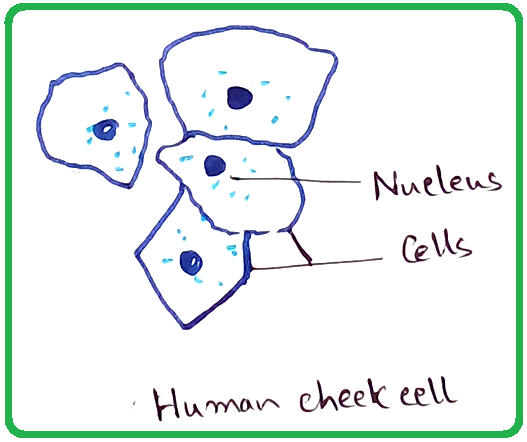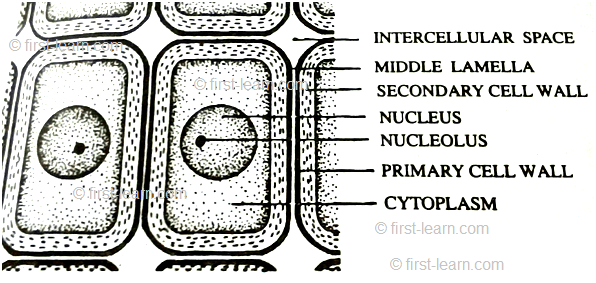Human Cheek Cells Under the Microscope
Staining of human cheek cell - First we have to take a clean piece of cotton swab and scrap the epithelium layer from the inside of our mouth. It is then put on the previously cleaned slide and smear is prepared. Then a staining solution called haematoxylin is added as a colour solution. Then the excess stain is removed and cover slip that is previously cleaned is added to the slide to make it appropriate for looking under microscope. Then the cheek cells are observed under microscope.
Human cheek cells are observed under microscope-
1. Cells are polygonal or flat in shape and structure –
2. They have irregular cellular thin boundaries which contains jelly like cytoplasm and the cytoplasm are granular.
3. This cell do not have plastids, vacuoles or cell wall.
4. They are generally made up of squamous epithelium cells.
Cell Wall – As animal cells do not contain any cell wall .So the cheek cell of the human embryo do not contain any cell wall.
Cell Membrane – Cell membrane are very thin border of the cells of the animal.
Question and Answer on Human Cheek Cells Under the Microscope
1. What is the name of the stain that is used for staining human cheek cell?
Answer: Haematoxylin is used for staining.
From Human Cheek Cells Under the Microscope to HOME PAGE
Recent Articles
-
Explain about Growth in Plants |Definition of Growth & Differentiation
Feb 27, 25 02:07 PM
Growth is a permanent increase in length or volume of an organism that brought upon by an increase in its dimensions due to synthesis of new protoplasmic material. -
Definition of Respiratory Quotient | calculation | Application | Plant
Dec 02, 24 12:09 AM
Definition of respiration quotient- the ratio of the carbon-dioxide evolved to that of the oxygen consumed by a cell, tissue, plants or animals in a given time is called respiratory quotient. It is us… -
Amphibolic Pathway | Definition | Examples | Pentose Phosphate Pathway
Jun 06, 24 10:40 AM
Definition of amphibolic pathway- Amphibolic pathway is a biochemical pathway where anabolism and catabolism are both combined together. Examples of amphibolic pathway- there are different biochemical… -
Respiratory Balance Sheet | TCA Cycle | ATP Consumption Process
Feb 18, 24 01:56 PM
The major component that produced during the photosynthesis is Glucose which is further metabolised by the different metabolic pathways like glycolysis, Krebs cycle, TCA cycle and produces energy whic… -
Electron Transport System and Oxidative Phosphorylation | ETC |Diagram
Feb 04, 24 01:57 PM
It is also called ETC. Electron transfer means the process where one electron relocates from one atom to the other atom. Definition of electron transport chain - The biological process where a chains…















New! Comments
Have your say about what you just read! Leave me a comment in the box below.